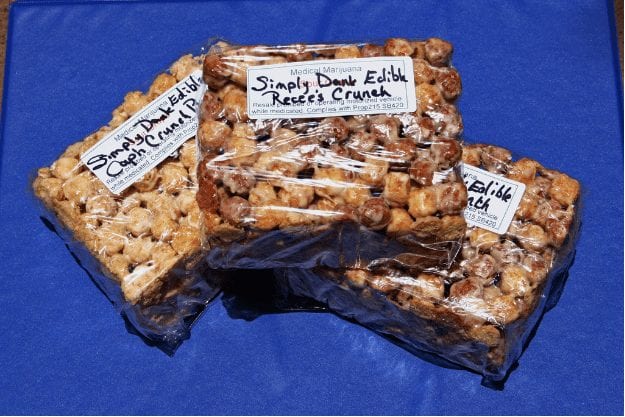
With smokable cannabis set to become legal within Canada’s ten provinces on October 17th, many have wondered and asked, “what about edibles?”
How Edibles Came to Canada
At first, edibles were not included in Bill C-45 first iteration. This changed about a year ago before it’s official first reading, when the Parliamentary Health Committee examined edibles as an acceptable form. They concluded prohibiting edibles would be a mistake, and would damage the effort for, “comprehensive cannabis legalization.”
Thus, edibles were included in the bill. That being said, you won’t find pot brownies for legal sale at marijuana dispensaries this fall, as lawmakers need more time to develop proper regulations, which may take up to a year. The eager may cook up their own edibles at home, the bill states.
For those who aren’t much for cooking, or simply want the convenience of grabbing a pot cookie to go, here’s what you may expect when edibles sales begin, gathered from what we know about upcoming legal cannabis regulations, and from current marijuana dispensary models in other legal markets.
Expect packaging for edibles to contain large warnings and labels to keep it out of the hands of non patient children
Clearly Labeled Packaging with Large Warning Labels
Packaging labels for legal cannabis may be more reminiscent of famous anti cigarette packages with large warnings and health conditions featured above their logos. While legal packaging for cannabis and edibles won’t contain grotesque pictures, like those of black lungs or rotten teeth, they certainly won’t be as eye catching as previous cannabis packaging.
In an interview with NBC, Chris Clay, the owner of Warmland Cannabis Centre in British Columbia vented his frustrations about the packaging regulations. “It looks like each bag is housing radioactive waste,” he remarked, “it’s a tiny logo with a huge warning label.”
You should also expect to find clear labels regarding cannabinoid levels, like THC. Edibles can be difficult to dose, and many over or under consume their desired amount of THC, leading to little or too much effect. One should expect legal edibles in Canada to display their THC levels in large print, as well as any dosing instructions.
These labels will help enthusiasts determine how much of an edible to eat. They will also inform medical professionals and first responders how much cannabis is in a patient’s system when they ingest an edible by mistake, particularly in the case of children.
Taken from a California model, legal edibles may have THC limits
Looking to Other Markets: Limiting Edibles Potency
While anticipating how edible sales will work is quite hard, we can look to our southern neighbors and how they tackled regulating edibles to get an idea of what lawmakers may implement.
California was the first American state to legalize medical cannabis (1996), and arguably the grandfather of all legal marijuana models since.
When legal sales of recreational cannabis began in California at the start of 2018, many edible enthusiasts were faced with a new THC limit, 100 milligrams. No legal edible product may exceed 100 milligrams in dose. This limit was apart of a series of changes made to edibles regulations to help curb misuse, promote responsible dosing, and to make edibles less appealing to children.
It’s no doubt that something sweet tasting and vibrant looking will attract a child’s eye, so expect to see vanilla, dried down versions of classics at least in presentation.
Don’t expect pot brownies, with zany designs on the package, but marijuana infused chocolate baked goods with more warning labels than icing or bright colors. Instead of a crunch bar, you may come across fiber +THC bars, or something that looks more “grown up” than a treat.
You won’t see “cannabis beer” anytime soon
While most of the expected edible regulations make sense, a few others make it difficult to innovate. For example, places where the cannabis industry and food industry touch will encounter some challenges.
In terms of cannabis infused beer, you won’t be able to buy a legal iteration of it in the near future. While it’s not illegal to produce a cannabis infused beer, you cannot do so for sale, as no idea or mention of the mixture can be found in B-C4, and is certainly not on the minds of regulatory bodies at the moment.
In an interview with CBC Radio’s website, Province Brands co-owner Dooma Wendschuh described the issues her Toronto based marijuana-beer company face, stating, “If I wanted to open an ice cream parlour, I could just open it. If I wanted to make a new flavour of ice cream, I could just make it. If I want to make a marijuana beverage, I can make it, but no one is allowed to drink it.”
The regulations for legal sales of edibles throughout Canada are still being drafted, but I hope this guide gave a bit of insight about what you will see when they make their way to a dispensary near you.
This has been a guest submitted post*




Leave a Reply